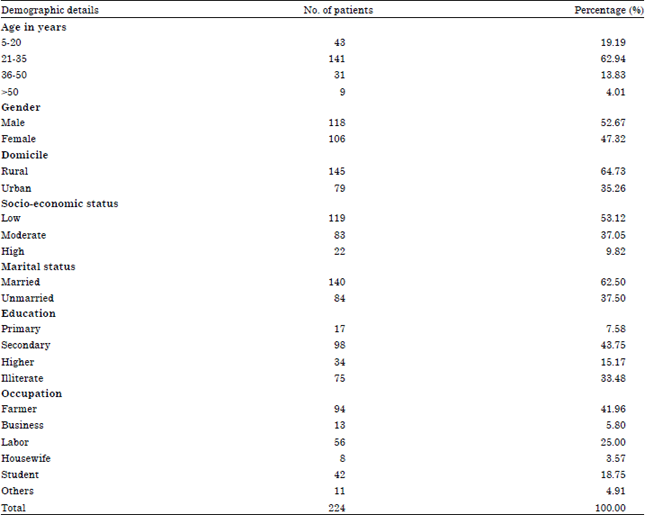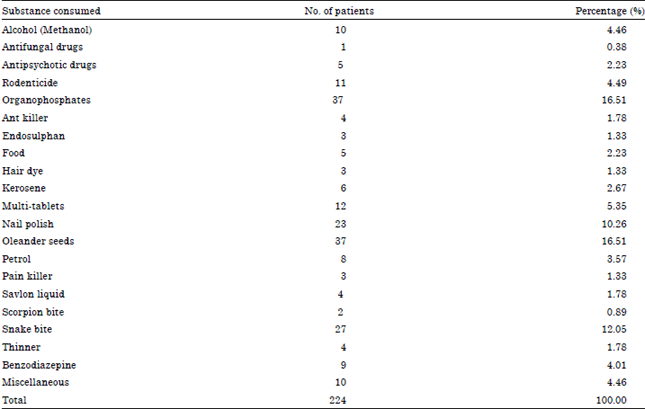Research Article
Prospective Analysis of Poisoning Cases in a Super Specialty Hospital in India
Department of Pharmacy Practice, SRM College of Pharmacy, SRM University, Kancheepuram District, Kattankulathur-603 203, Tamil Nadu, India
S. Santhosh
Department of Pharmacy Practice, SRM College of Pharmacy, SRM University, Kancheepuram District, Kattankulathur-603 203, Tamil Nadu, India
C. Ramasamy
Department of Pharmacy Practice, SRM College of Pharmacy, SRM University, Kancheepuram District, Kattankulathur-603 203, Tamil Nadu, India












